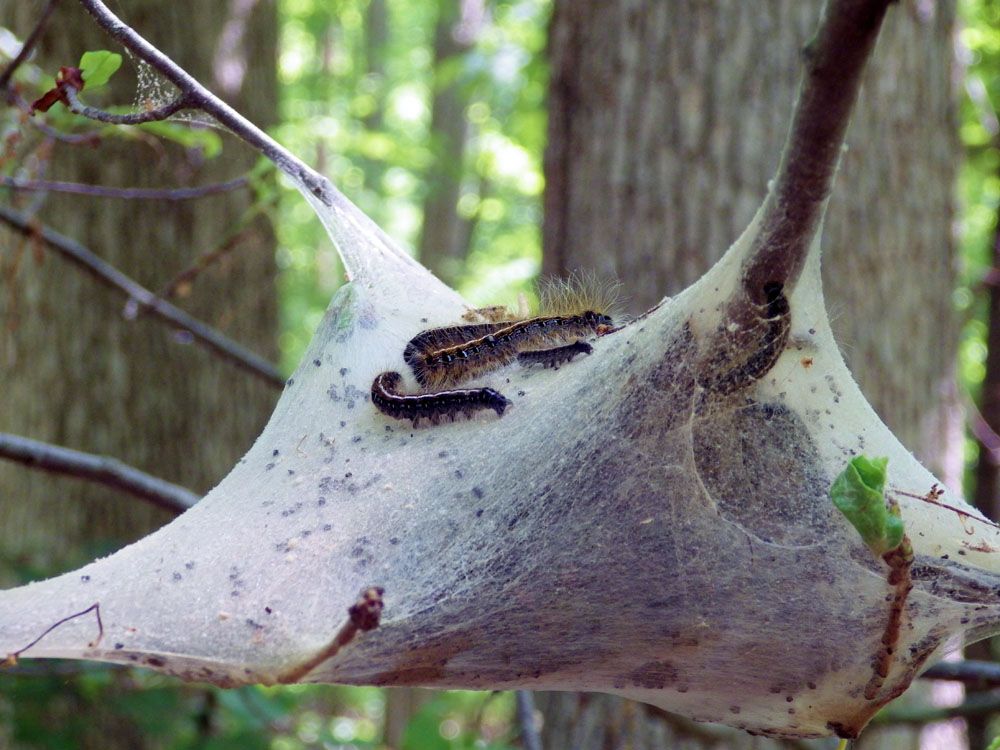
Eastern Tent Caterpillar – Malacosoma americanum
Eastern Tent Caterpillar – Malacosoma americanum
Common Name: Eastern Tent Caterpillar
Latin Name: Malacosoma americanum
Appearance:
- Eastern tent caterpillars are an issue for most homeowners because they eat the leaves of several popular decorative landscaping plants.
- Early spring sees the caterpillar’s emergence. They are almost 2 inches long in their last instar and have noticeable hairs running down the sides of their bodies. A white stripe runs down the backs of the black larvae to identify them. Along the sides, irregular bands of brown and yellow are interspersed with blue oval specks.
- After three weeks, Malacosoma americanum moths emerge from their cocoons. They lack vivid colors and have an almost drab appearance, like many moths. When seen closely, two parallel cream lines can be seen across the tan or reddish-brown wings.
